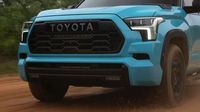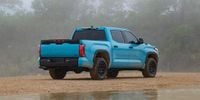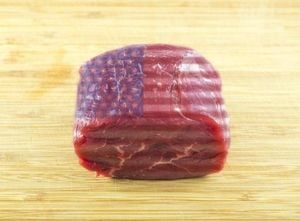The 2026 Toyota Sequoia rolls into the new model year with subtle yet meaningful updates that continue to build on its reputation as a rugged, full-size SUV with a distinctive personality. Now entering its fourth year on the TNGA-F platform, which it shares with the Lexus LX and the global Land Cruiser, the Sequoia sticks with its proven i-Force Max twin-turbo 3.4-liter V-6 hybrid powertrain. This engine delivers a robust 437 horsepower and 583 pound-feet of torque, making it one of the most powerful options in its segment and capable of towing up to 9,520 pounds on rear-drive models.
While the mechanical heart of the Sequoia remains unchanged, Toyota has introduced several refinements across the lineup for 2026. Perhaps the most eye-catching addition is the exclusive Wave Maker blue paint, reserved solely for the off-road-focused TRD Pro trim. This vibrant color joins the ranks of Toyota's tradition of releasing a signature hue for its TRD Pro models, echoing the same treatment given to the 4Runner, Tacoma, and Tundra. The Wave Maker blue gives the Sequoia TRD Pro a fresh, adventurous look, evoking images of surf trips and scenic coastal drives.
Inside, the Capstone trim, which sits at the top of the Sequoia range, now showcases Shale Premium textured leather-trimmed seats. This new interior color scheme combines grayish leather upholstery with a dark dashboard and ruddy brown stitching and accents, lending a sophisticated yet earthy feel to the cabin. The Limited trim also receives an upgrade from its previous SofTex synthetic leather to genuine cowhide leather available in black with white contrast stitching or gray with black stitching. These interior enhancements reflect Toyota’s commitment to elevating comfort and luxury without straying from the Sequoia’s rugged roots.
Comfort and convenience see a notable boost across all trims with the introduction of power-folding third-row seats. Previously, this feature was limited to the higher trims such as Limited, TRD Pro, 1794 Edition, Platinum, and Capstone, but now even the entry-level SR5 benefits from this thoughtful addition. This enhancement simplifies the process of expanding cargo space, making the Sequoia more versatile for families and adventurers alike.
For those seeking a more indulgent driving experience, the 1794, Platinum, and Capstone trims offer standard massaging power front seats with 10-way power adjustments. These seats provide upper and lower body massages whether the vehicle is parked or in motion, a rare luxury in the full-size SUV segment and a welcome comfort for long journeys or off-road excursions.
Despite these upgrades, the Sequoia maintains its distinctive mechanical setup. The live rear axle suspension, a simpler and more rugged choice compared to independent rear suspensions found in rivals like the Chevrolet Tahoe and Ford Expedition, remains in place. This design, combined with the large nickel-metal hydride battery positioned under the third row, does limit cargo and passenger space in the rear compared to competitors. However, the trade-off is a more maneuverable and off-road-capable vehicle, especially in the TRD Pro trim, which continues to offer an electronically locking rear differential and a multi-terrain monitor as standard equipment.
Pricing for the 2026 Sequoia sees modest increases. The entry-level SR5 starts at $66,120, up $1,600 from the previous year. Four-wheel drive remains an optional $3,000 upgrade on the SR5 and other trims that do not include it as standard, while the TRD Pro, 1794 Edition, and Capstone trims come with it out of the box. Other trims experience smaller price bumps ranging from $465 to $970, reflecting the minor nature of the updates.
Alongside the Sequoia, Toyota’s full-size pickup, the Tundra, also receives a suite of thoughtful enhancements for 2026. Like the Sequoia, the Tundra’s TRD Pro trim debuts the Wave Maker blue paint, linking the two vehicles visually in Toyota’s off-road lineup. The Capstone trim on the Tundra likewise gains the new Shale-colored leather-trimmed seats with the distinctive brown stripe, while the Limited trim upgrades to genuine leather in black or gray with contrasting stitching.
The Tundra further benefits from practical upgrades such as standard tow hitches and 7/4-pin connectors across all trims, including the base SR. The fuel tank size has been increased fleet-wide from 22.5 gallons to a substantial 32.2 gallons, enhancing driving range. Crew-cab versions now feature rear center console air vents, improving passenger comfort, and models equipped with single-zone climate control receive Toyota’s smartflow management system (also known as S-Flow), which optimizes airflow by directing it only to occupied seats.
Additional trim-specific upgrades include power running boards for the Platinum and 1794 trims with the TRD Off-Road package, and the SX package now comes with larger 20-inch wheels instead of 18-inch ones. The SR5-based TRD Rally Package offers a 3-inch lift kit and Tow Tech Package, catering to enthusiasts seeking enhanced off-road capabilities.
Mechanically, the Tundra continues to offer a choice between a 3.4-liter twin-turbo V6 with or without hybrid assistance. The standard i-Force V6 produces 389 horsepower and 479 pound-feet of torque, while the i-Force Max hybrid variant boosts output to 437 horsepower and 583 pound-feet of torque, matching the Sequoia’s powertrain. The Tundra also outpaces the Sequoia in towing capacity, capable of hauling up to 12,000 pounds when properly equipped.
Toyota has not announced exact arrival dates or pricing for the 2026 Tundra and Sequoia, but both are expected to reach dealerships before the end of the year. Pricing is anticipated to remain close to current levels, with the Tundra starting in the mid-$40,000 range and the Sequoia around $65,000.
Overall, the 2026 Toyota Sequoia and Tundra embody Toyota’s strategy of incremental refinement rather than sweeping redesigns. The new colors, upgraded interiors, and added conveniences enhance their appeal without compromising the rugged, capable character that has earned them loyal followings. Whether it’s the Sequoia’s blend of off-road prowess and family-friendly features or the Tundra’s robust towing and trail-ready options, Toyota’s full-size vehicles continue to stand out in a crowded segment.
As Justin Banner, an automotive expert and MotorTrend editor, puts it, the Sequoia offers a "fun-loving approach to big-SUV living," combining muscular hybrid powertrains with practical features like power-folding seats and massaging front chairs. While it may not have the cavernous rear space of some competitors, its maneuverability and personality make it a compelling choice for those who value capability and comfort in equal measure.





